- Home
- Roald Dahl
Completely Unexpected Tales Page 22
Completely Unexpected Tales Read online
Page 22
But obviously there was a bit more to it than that. Country folk are a suspicious lot. So are the impoverished rich. You can’t go about ringing their bells and expecting them to show you around their houses just for the asking, because they won’t do it. That way you would never get beyond the front door. How then was he to gain admittance? Perhaps it would be best if he didn’t let them know he was a dealer at all. He could be the telephone man, the plumber, the gas inspector. He could even be a clergyman…
From this point on, the whole scheme began to take on a more practical aspect. Mr Boggis ordered a large quantity of superior cards on which the following legend was engraved:
THE REVEREND
CYRIL WINNINGTON BOGGIS
President of the Society for the Preservation of Rare Furniture
In association with The Victoria and Albert Museum
From now on, every Sunday, he was going to be a nice old parson spending his holiday travelling around on a labour of love for the ‘Society’, compiling an inventory of the treasures that lay hidden in the country homes of England. And who in the world was going to kick him out when they heard that one?
Nobody.
And then, once he was inside, if he happened to spot something he really wanted, well – he knew a hundred different ways of dealing with that.
Rather to Mr Boggis’s surprise, the scheme worked. In fact, the friendliness with which he was received in one house after another through the countryside was, in the beginning, quite embarrassing, even to him. A slice of cold pie, a glass of port, a cup of tea, a basket of plums, even a full sit-down Sunday dinner with the family, such things were constantly being pressed upon him. Sooner or later, of course, there had been some bad moments and a number of unpleasant incidents, but then nine years is more than four hundred Sundays, and that adds up to a great quantity of houses visited. All in all, it had been an interesting, exciting, and lucrative business.
And now it was another Sunday and Mr Boggis was operating in the county of Buckinghamshire, in one of the most northerly squares on his map, about ten miles from Oxford, and as he drove down the hill and headed for his first house, the dilapidated Queen Anne, he began to get the feeling that this was going to be one of his lucky days.
He parked the car about a hundred yards from the gates and got out to walk the rest of the way. He never liked people to see his car until after the deal was completed. A dear old clergyman and a large station-wagon somehow never seemed quite right together. Also the short walk gave him time to examine the property closely from the outside and to assume the mood most likely to be suitable for the occasion.
Mr Boggis strode briskly up the drive. He was a small fat-legged man with a belly. The face was round and rosy, quite perfect for the part, and the two large brown eyes that bulged out at you from this rosy face gave an impression of gentle imbecility. He was dressed in a black suit with the usual parson’s dog-collar round his neck, and on his head a soft black hat. He carried an old oak walking-stick which lent him, in his opinion, a rather rustic easy-going air.
He approached the front door and rang the bell. He heard the sound of footsteps in the hall and the door opened and suddenly there stood before him, or rather above him, a gigantic woman dressed in riding-breeches. Even through the smoke of her cigarette he could smell the powerful odour of stables and horse manure that clung about her.
‘Yes?’ she asked, looking at him suspiciously. ‘What is it you want?’
Mr Boggis, who half expected her to whinny any moment, raised his hat, made a little bow, and handed her his card. ‘I do apologize for bothering you,’ he said, and then he waited, watching her face as she read the message.
‘I don’t understand,’ she said, handing back the card. ‘What is it you want?’
Mr Boggis explained about the Society for the Preservation of Rare Furniture.
‘This wouldn’t by any chance be something to do with the Socialist Party?’ she asked, staring at him fiercely from under a pair of pale bushy brows.
From then on, it was easy. A Tory in riding-breeches, male or female, was always a sitting duck for Mr Boggis. He spent two minutes delivering an impassioned eulogy on the extreme Right Wing of the Conservative Party, then two more denouncing the Socialists. As a clincher, he made particular reference to the Bill that the Socialists had once introduced for the abolition of blood-sports in the country, and went on to inform his listener that his idea of heaven – ‘though you better not tell the bishop, my dear’ – was a place where one could hunt the fox, the stag, and the hare with large packs of tireless hounds from morn till night every day of the week, including Sundays.
Watching her as he spoke, he could see the magic beginning to do its work. The woman was grinning now, showing Mr Boggis a set of enormous, slightly yellow teeth. ‘Madam,’ he cried, ‘I beg of you, please don’t get me started on Socialism.’ At that point, she let out a great guffaw of laughter, raised an enormous red hand, and slapped him so hard on the shoulder that he nearly went over.
‘Come in!’ she shouted. ‘I don’t know what the hell you want, but come on in!’
Unfortunately, and rather surprisingly, there was nothing of any value in the whole house, and Mr Boggis, who never wasted time on barren territory, soon made his excuses and took his leave. The whole visit had taken less than fifteen minutes, and that, he told himself as he climbed back into his car and started off for the next place, was exactly as it should be.
From now on, it was all farmhouses, and the nearest was about half a mile up the road. It was a large half-timbered brick building of considerable age, and there was a magnificent pear tree still in blossom covering almost the whole of the south wall.
Mr Boggis knocked on the door. He waited, but no one came. He knocked again, but still there was no answer, so he wandered around the back to look for the farmer among the cowsheds. There was no one there either. He guessed that they must all still be in church, so he began peering in the windows to see if he could spot anything interesting. There was nothing in the dining-room. Nothing in the library either. He tried the next window, the living-room, and there, right under his nose, in the little alcove that the window made, he saw a beautiful thing, a semi-circular card-table in mahogany, richly veneered, and in the style of Hepplewhite, built around 1780.
‘Ah-ha,’ he said aloud, pressing his face hard against glass. ‘Well done, Boggis.’
But that was not all. There was a chair there as well, a single chair, and if he were not mistaken it was of an even finer quality than the table. Another Hepplewhite, wasn’t it? And oh, what a beauty! The lattices on the back were finely carved with the honeysuckle, the husk, and the paterae, the caning on the seat was original, the legs were very gracefully turned and the two back ones had that peculiar outward splay that meant so much. It was an exquisite chair. ‘Before this day is done,’ Mr Boggis said softly, ‘I shall have the pleasure of sitting down upon that lovely seat.’ He never bought a chair without doing this. It was a favourite test of his, and it was always an intriguing sight to see him lowering himself delicately into the seat, waiting for the ‘give’, expertly gauging the precise but infinitesimal degree of shrinkage that the years had caused in the mortice and dovetail joints.
But there was no hurry, he told himself. He would return here later. He had the whole afternoon before him.
The next farm was situated some way back in the fields, and in order to keep his car out of sight, Mr Boggis had to leave it on the road and walk about six hundred yards along a straight track that led directly into the back yard of the farmhouse. This place, he noticed as he approached, was a good deal smaller than the last, and he didn’t hold out much hope for it. It looked rambling and dirty, and some of the sheds were clearly in bad repair.
There were three men standing in a close group in a corner of the yard, and one of them had two large black greyhounds with him, on leashes. When the men caught sight of Mr Boggis walking forward in his black suit and parson’s co
llar, they stopped talking and seemed suddenly to stiffen and freeze, becoming absolutely still, motionless, three faces turned towards him, watching him suspiciously as he approached.
The oldest of the three was a stumpy man with a wide frog mouth and small shifty eyes, and although Mr Boggis didn’t know it, his name was Rummins and he was the owner of the farm.
The tall youth beside him, who appeared to have something wrong with one eye, was Bert, the son of Rummins.
The shortish fat-faced man with a narrow corrugated brow and immensely broad shoulders was Claud. Claud had dropped in on Rummins in the hope of getting a piece of pork or ham out of him from the pig that had been killed the day before. Claud knew about the killing – the noise of it had carried far across the fields – and he also knew that a man should have a government permit to do that sort of thing, and that Rummins didn’t have one.
‘Good afternoon,’ Mr Boggis said. ‘Isn’t it a lovely day?’
None of the three men moved. At that moment they were all thinking precisely the same thing – that somehow or other this clergyman, who was certainly not the local fellow, had been sent to poke his nose into their business and to report what he found to the government.
‘What beautiful dogs,’ Mr Boggis said. ‘I must say I’ve never been greyhound-racing myself, but they tell me it’s a fascinating sport.’
Again the silence, and Mr Boggis glanced quickly from Rum mins to Bert, then to Claud, then back again to Rummins, and he noticed that each of them had the same peculiar expression on his face, something between a jeer and a challenge, with a contemptuous curl to the mouth and a sneer around the nose.
‘Might I inquire if you are the owner?’ Mr Boggis asked, undaunted, addressing himself to Rummins.
‘What is it you want?’
‘I do apologize for troubling you, especially on a Sunday.’
Mr Boggis offered his card and Rummins took it and held it up close to his face. The other two didn’t move, but their eyes swivelled over to one side, trying to see.
‘And what exactly might you be wanting?’ Rummins asked.
For the second time that morning, Mr Boggis explained at some length the aims and ideals of the Society for the Preservation of Rare Furniture.
‘We don’t have any,’ Rummins told him when it was over. ‘You’re wasting your time.’
‘Now, just a minute, sir,’ Mr Boggis said, raising a finger. ‘The last man who said that to me was an old farmer down in Sussex, and when he finally let me into his house, d’you know what I found? A dirty-looking old chair in the corner of the kitchen, and it turned out to be worth four hundred pounds! I showed him how to sell it, and he bought himself a new tractor with the money.’
‘What on earth are you talking about?’ Claud said. ‘There ain’t no chair in the world worth four hundred pound.’
‘Excuse me,’ Mr Boggis answered primly, ‘but there are plenty of chairs in England worth more than twice that figure. And you know where they are? They’re tucked away in the farms and cottages all over the country, with the owners using them as steps and ladders and standing on them with hobnailed boots to reach a pot of jam out of the top cupboard or to hang a picture. This is the truth I’m telling you, my friends.’
Rummins shifted uneasily on his feet. ‘You mean to say all you want to do is go inside and stand there in the middle of the room and look around?’
‘Exactly,’ Mr Boggis said’ He was at last beginning to sense what the trouble might be. ‘I don’t want to pry into your cup boards or into your larder. I just want to look at the furniture to see if you happen to have any treasures here, and then I can write about them in our Society magazine.’
‘You know what I think?’ Rummins said, fixing him with his small wicked eyes. ‘I think you’re after buying the stuff yourself. Why else would you be going to all this trouble?’
‘Oh, dear me. I only wish I had the money. Of course, if I saw something that I took a great fancy to, and it wasn’t beyond my means, I might be tempted to make an offer. But alas, that rarely happens.’
‘Well,’ Rummins said, ‘I don’t suppose there’s any harm in your taking a look around if that’s all you want.’ He led the way across the yard to the back door of the farmhouse, and Mr Boggis followed him; so did the son Bert, and Claud with his two dogs. They went through the kitchen, where the only furniture was a cheap deal table with a dead chicken lying on it, and they emerged into a fairly large, exceedingly filthy living-room.
And there it was! Mr Boggis saw it at once, and he stopped dead in his tracks and gave a little shrill gasp of shock. Then he stood there for five, ten, fifteen seconds at least, staring like an idiot, unable to believe, not daring to believe what he saw before him. It couldn’t be true, not possibly! But the longer he stared, the more true it began to seem. After all, there it was standing against the wall right in front of him, as real and as solid as the house itself. And who in the world could possibly make a mistake about a thing like that? Admittedly it was painted white, but that made not the slightest difference. Some idiot had done that. The paint could easily be stripped off. But good God! Just look at it! And in a place like this!
At this point, Mr Boggis became aware of the three men, Rummins, Bert, and Claud, standing together in a group over by the fireplace, watching him intently. They had seen him stop and gasp and stare, and they must have seen his face turning red, or maybe it was white, but in any event they had seen enough to spoil the whole goddamn business if he didn’t do something about it quick. In a flash, Mr Boggis clapped one hand over his heart, staggered to the nearest chair, and collapsed into it, breathing heavily.
‘What’s the matter with you?’ Claud asked.
‘It’s nothing,’ he gasped. ‘I’ll be all right in a minute. Please –a glass of water. It’s my heart.’
Bert fetched him the water, handed it to him, and stayed close beside him, staring down at him with a fatuous leer on his face.
‘I thought maybe you were looking at something,’ Rummins said. The wide frog-mouth widened a fraction further into a crafty grin, showing the stubs of several broken teeth.
‘No, no,’ Mr Boggis said. ‘Oh dear me, no. It’s just my heart. I’m so sorry. It happens every now and then. But it goes away quite quickly. I’ll be all right in a couple of minutes.’
He must have time to think, he told himself. More important still, he must have time to compose himself thoroughly before he said another word. Take it gently, Boggis. And whatever you do, keep calm. These people may be ignorant, but they are not stupid. They are suspicious and wary and sly. And if it is really true – no it can’t be, it can’t be true…
He was holding one hand up over his eyes in a gesture of pain, and now, very carefully, secretly, he made a little crack between two of the fingers and peeked through.
Sure enough, the thing was still there, and on this occasion he took a good long look at it. Yes – he had been right the first time! There wasn’t the slightest doubt about it! It was really unbelievable!
What he saw was a piece of furniture that any expert would have given almost anything to acquire. To a layman, it might not have appeared particularly impressive, especially when covered over as it was with dirty white paint, but to Mr Boggis it was a dealer’s dream. He knew, as does every other dealer in Europe and America, that among the most celebrated and coveted examples of eighteenth-century English furniture in existence are the three famous pieces known as ‘The Chippendale Commodes’. He knew their history backwards – that the first was ‘discovered’ in 1920, in a house at Moreton-in-Marsh, and was sold at Sotheby’s the same year; that the other two turned up in the same auction rooms a year later, both coming out of Raynham Hall, Norfolk. They all fetched enormous prices. He couldn’t quite remember the exact figure for the first one, or even the second, but he knew for certain that the last one to be sold had fetched thirty-nine hundred guineas. And that was in 1921! Today the same piece would surely be worth ten thousand pound
s. Some man, Mr Boggis couldn’t remember his name, had made a study of these commodes fairly recently and had proved that all three must have come from the same workshop, for the veneers were all from the same log, and the same set of templates had been used in the construction of each. No invoices had been found for any of them, but all the experts were agreed that these three commodes could have been executed only by Thomas Chippendale himself, with his own hands, at the most exalted period in his career.
And here, Mr Boggis kept telling himself as he peered cautiously through the crack in his fingers, here was the fourth Chippendale Commode! And he had found it! He would be rich! He would also be famous! Each of the other three was known throughout the furniture world by a special name – The Chastleton Commode, the First Raynham Commode, The Second Raynham Commode. This one would go down in history as the Boggis Commode! Just imagine the faces of the boys up there in London when they got a look at it tomorrow morning! And the luscious offers coming in from the big fellows over in the West End – Frank Partridge, Mallett, Jetley, and the rest of them! There would be a picture of it in The Times, and it would say, ‘The very fine Chippendale Commode which was recently discovered by Mr Cyril Boggis, a London dealer…’ Dear God, what a stir he was going to make!
This one here, Mr Boggis thought, was almost exactly similar to the Second Raynham Commode. (All three, the Chastleton and the two Raynhams, differed from one another in a number of small ways.) It was a most impressive, handsome affair, built in the French rococo style of Chippendale’s Directoire period, a kind of large fat chest-of-drawers set upon four carved and fluted legs that raised it about a foot from the ground. There were six drawers in all, two long ones in the middle and two shorter ones on either side. The serpentine front was magnificently ornamented along the top and sides and bottom, and also vertically between each set of drawers, with intricate carvings of festoons and scrolls and clusters. The brass handles, although partly obscured by white paint, appeared to be superb. It was, of course, a rather ‘heavy’ piece, but the design had been executed with such elegance and grace that the heaviness was in no way offensive.

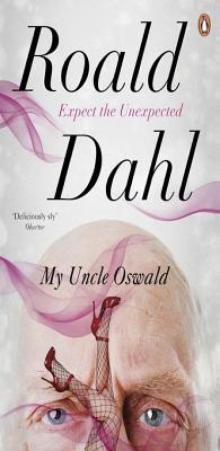 My Uncle Oswald
My Uncle Oswald The Best of Roald Dahl
The Best of Roald Dahl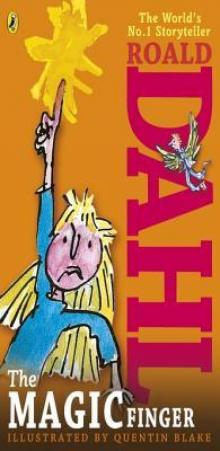 The Magic Finger
The Magic Finger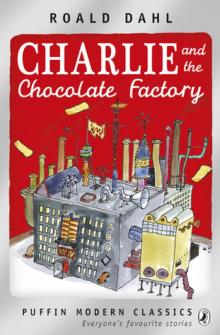 Charlie and the Chocolate Factory
Charlie and the Chocolate Factory Fantastic Mr Fox
Fantastic Mr Fox Matilda
Matilda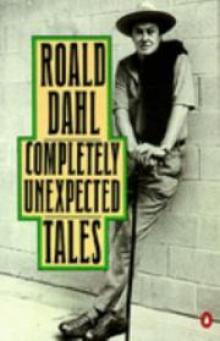 Completely Unexpected Tales: Tales of the Unexpected. More Tales of the Unexpected
Completely Unexpected Tales: Tales of the Unexpected. More Tales of the Unexpected The Wonderful Story of Henry Sugar and Six More
The Wonderful Story of Henry Sugar and Six More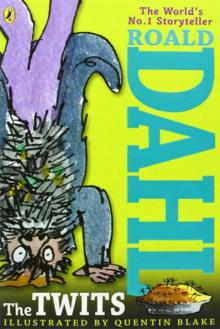 The Twits
The Twits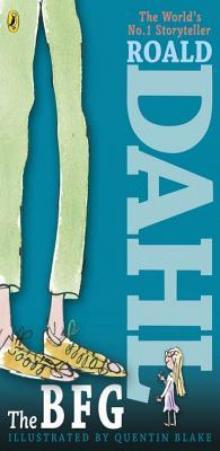 The BFG
The BFG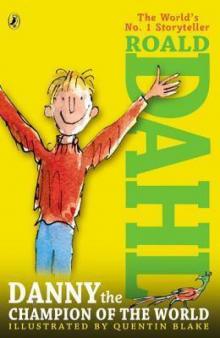 Danny the Champion of the World
Danny the Champion of the World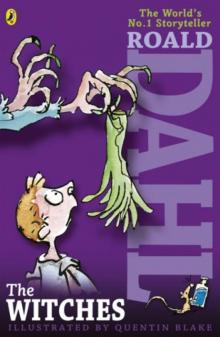 The Witches
The Witches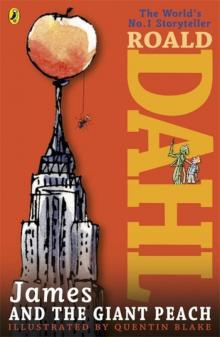 James and the Giant Peach
James and the Giant Peach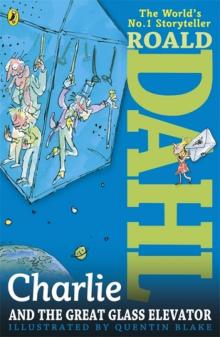 Charlie and the Great Glass Elevator
Charlie and the Great Glass Elevator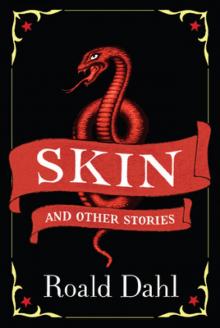 Skin and Other Stories
Skin and Other Stories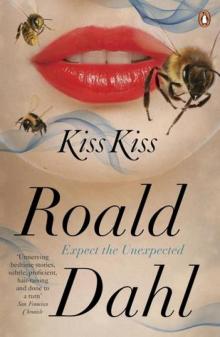 Kiss Kiss
Kiss Kiss Switch Bitch
Switch Bitch The Giraffe and the Pelly and Me
The Giraffe and the Pelly and Me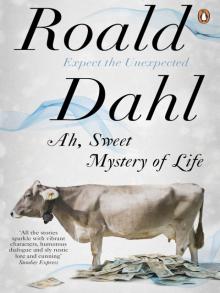 Ah, Sweet Mystery of Life
Ah, Sweet Mystery of Life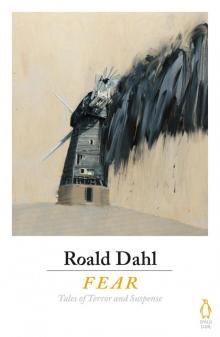 Fear
Fear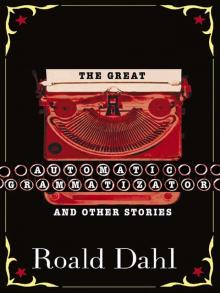 The Great Automatic Grammatizator and Other Stories
The Great Automatic Grammatizator and Other Stories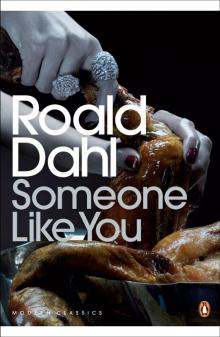 Someone Like You
Someone Like You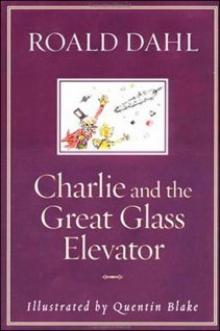 Charlie and the Great Glass Elevator c-2
Charlie and the Great Glass Elevator c-2 More About Boy
More About Boy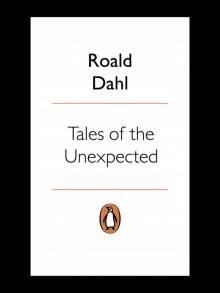 Tales of the Unexpected
Tales of the Unexpected The Umbrella Man and Other Stories
The Umbrella Man and Other Stories Dirty Beasts
Dirty Beasts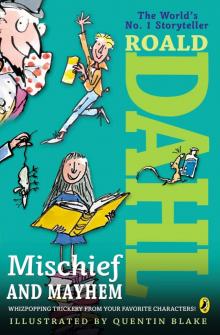 Roald Dahl's Mischief and Mayhem
Roald Dahl's Mischief and Mayhem The Collected Short Stories of Roald Dahl, Volume 1
The Collected Short Stories of Roald Dahl, Volume 1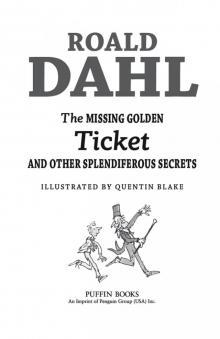 The Missing Golden Ticket and Other Splendiferous Secrets
The Missing Golden Ticket and Other Splendiferous Secrets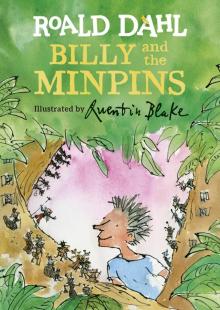 Billy and the Minpins
Billy and the Minpins Over to You
Over to You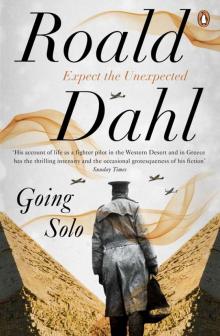 Going Solo
Going Solo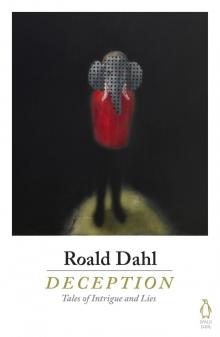 Deception
Deception War
War Man from the South ee-3
Man from the South ee-3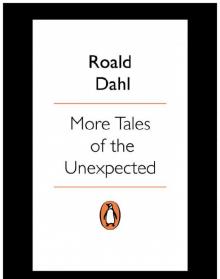 More Tales of the Unexpected
More Tales of the Unexpected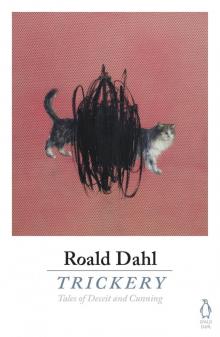 Trickery
Trickery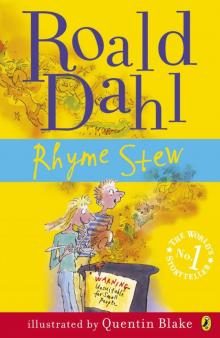 Rhyme Stew
Rhyme Stew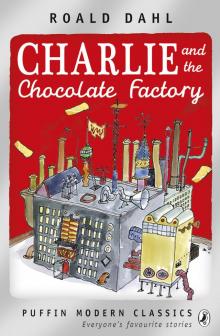 Charlie and the Chocolate Factory (Puffin Modern Classics relaunch)
Charlie and the Chocolate Factory (Puffin Modern Classics relaunch)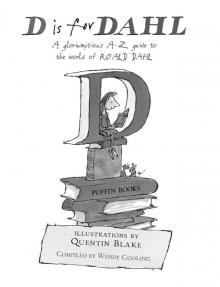 D is for Dahl
D is for Dahl Roald Dahl Whoppsy-Whiffling Joke Book
Roald Dahl Whoppsy-Whiffling Joke Book Spotty Powder and other Splendiferous Secrets
Spotty Powder and other Splendiferous Secrets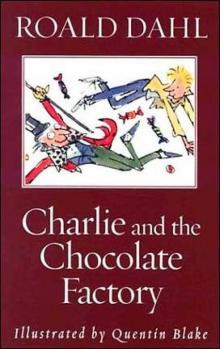 Charlie and the Chocolate Factory c-1
Charlie and the Chocolate Factory c-1 Boy
Boy Completely Unexpected Tales
Completely Unexpected Tales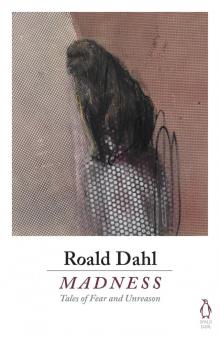 Madness
Madness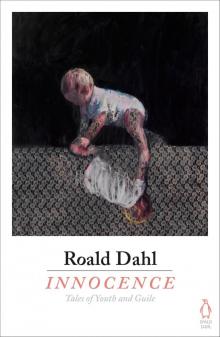 Innocence
Innocence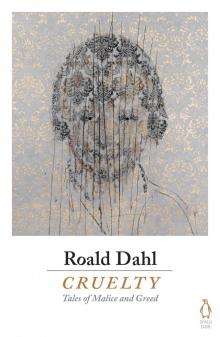 Cruelty
Cruelty George's Marvellous Medicine
George's Marvellous Medicine